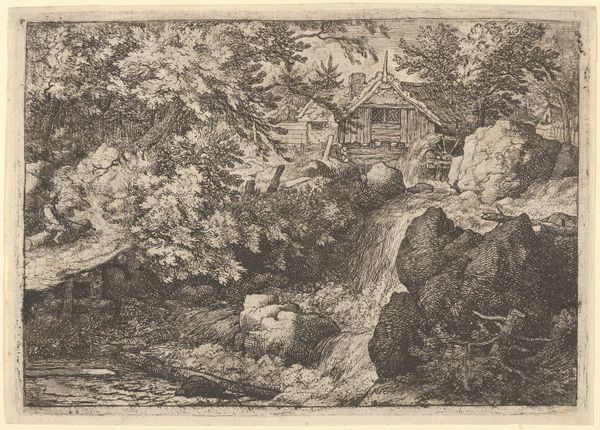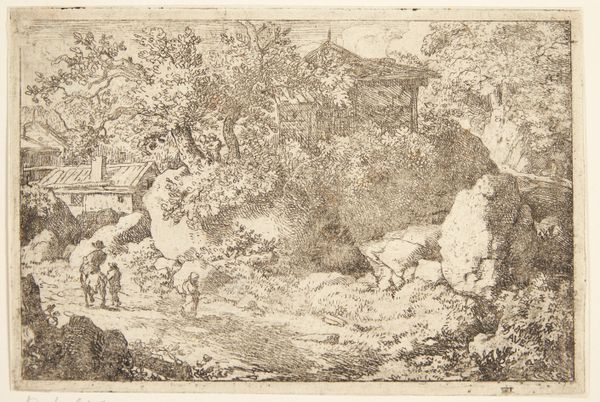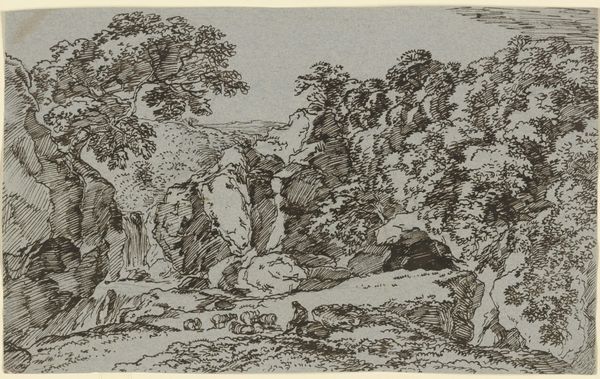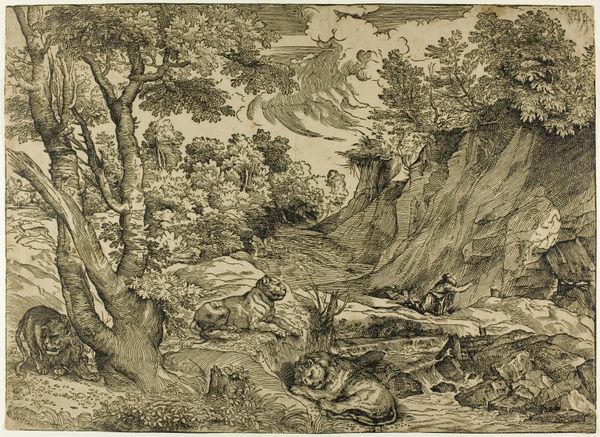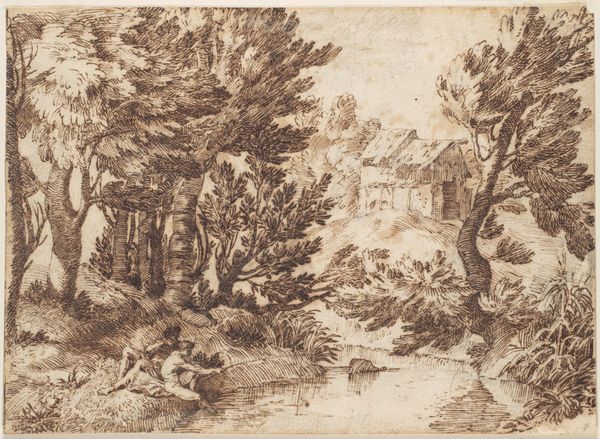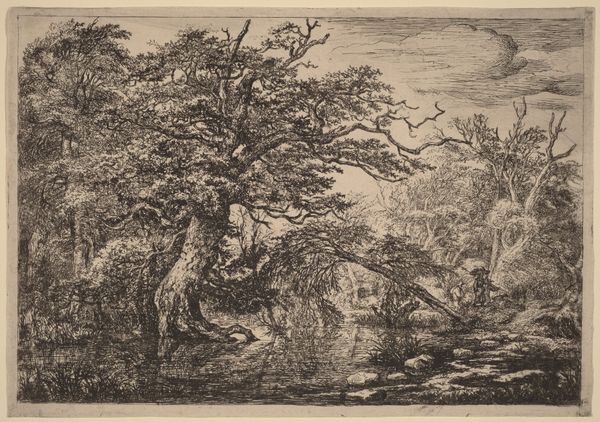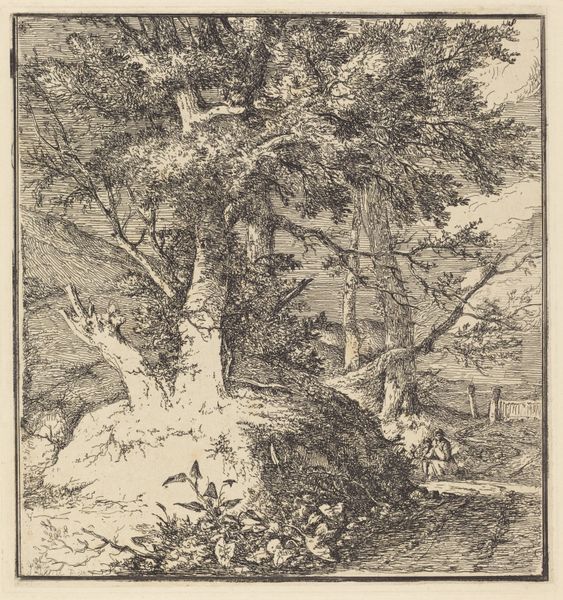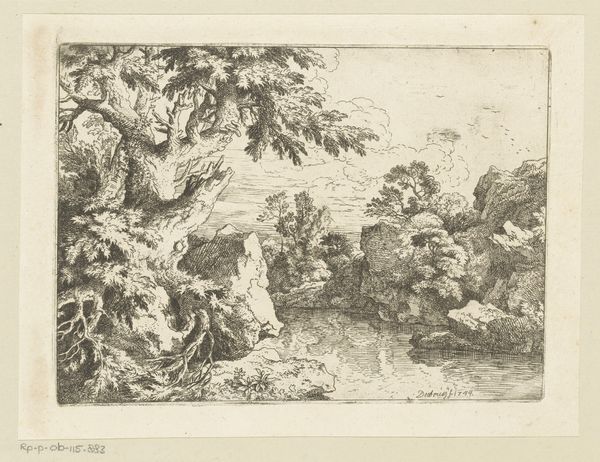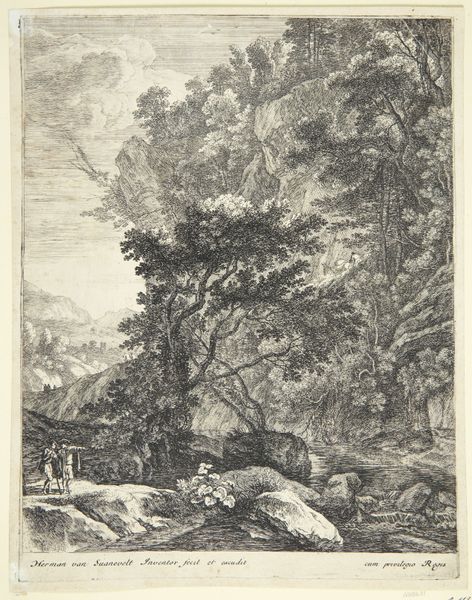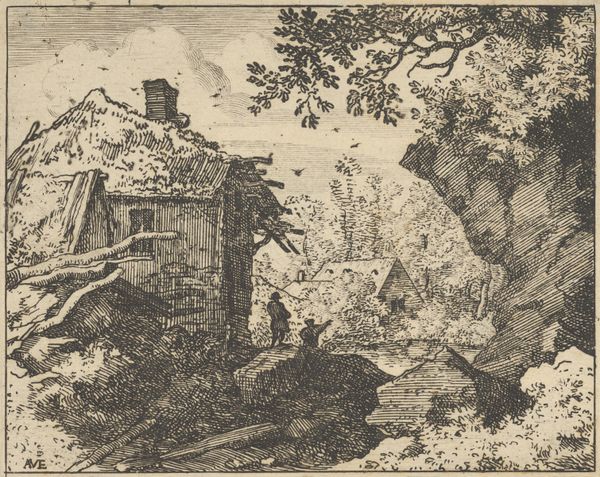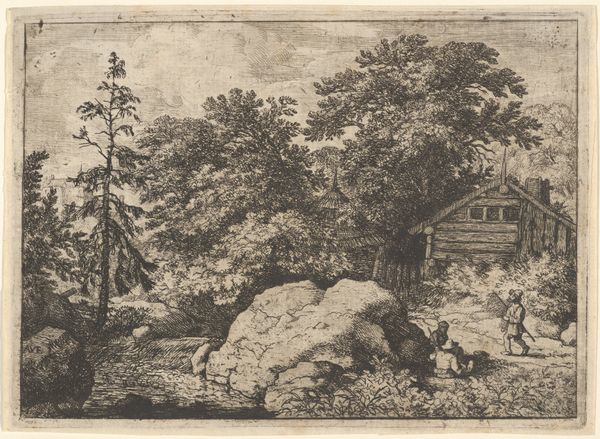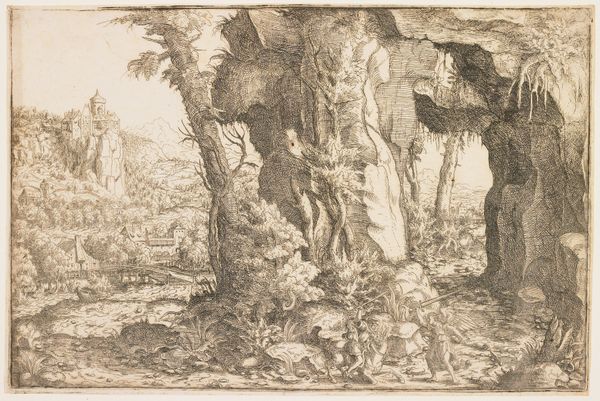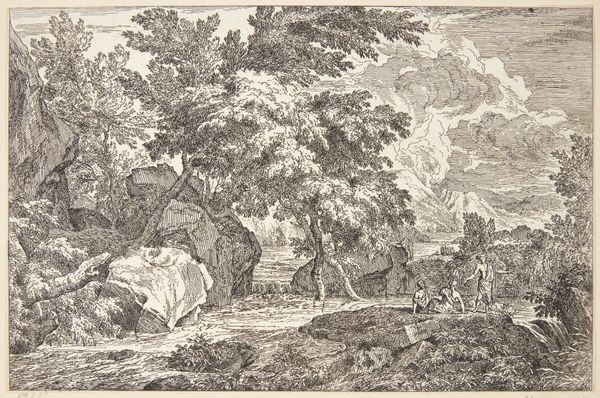
print, etching
#
dutch-golden-age
# print
#
etching
#
landscape
Dimensions: 144 mm (height) x 124 mm (width) (plademaal)
Curator: Allaert van Everdingen created this etching, "Vandmølle ved et vandfald" – Watermill by a Waterfall – sometime between 1621 and 1675. Editor: It feels... enclosed. Dark, even, despite being a landscape. The density of the lines really weighs it down. It’s all in grayscale. Curator: The density lends it a primordial feeling. Water is a powerful symbol. Consider the wheel churning: relentless labor but also cleansing and renewal, core to cultural development and industrial origins. The figure to the left seems dwarfed by the sublime landscape and architecture. Editor: Exactly! The medium contributes too. The repetitive act of etching—layering those lines onto the metal plate to achieve such texture—echoes the mill’s own mechanized, repetitive action. It speaks of the physical act of labor, both human and machine driven. How was this replicated, what social conditions were present in its manufacture and use. Curator: There is also something deeper, if you consider that in the Dutch Golden Age, idealized rural settings often masked underlying economic realities. The imagery here reminds of an archetypal past with ancient, simple structures and technologies that are, however, slowly vanishing as we advance. Van Everdingen tapped into a nostalgia even as his society was dramatically changing. The romantic notion that once all was wild and free is also at stake. Editor: So, even a seemingly straightforward landscape holds layers of commentary on process and place? Curator: Precisely! The churning water not just powers the mill but mirrors a churn within the culture, a societal flux reflected in the artistry of the print. Van Everdingen does not simply capture what the eyes can see, but he also tries to capture the essence of memory of land as it shifts towards industrialised landscape. Editor: The tension between the depicted world and the physical act of creating it – I'll definitely carry that with me. Curator: It reminds of cycles—historical, personal, and those powered by nature itself.
Comments
No comments
Be the first to comment and join the conversation on the ultimate creative platform.
